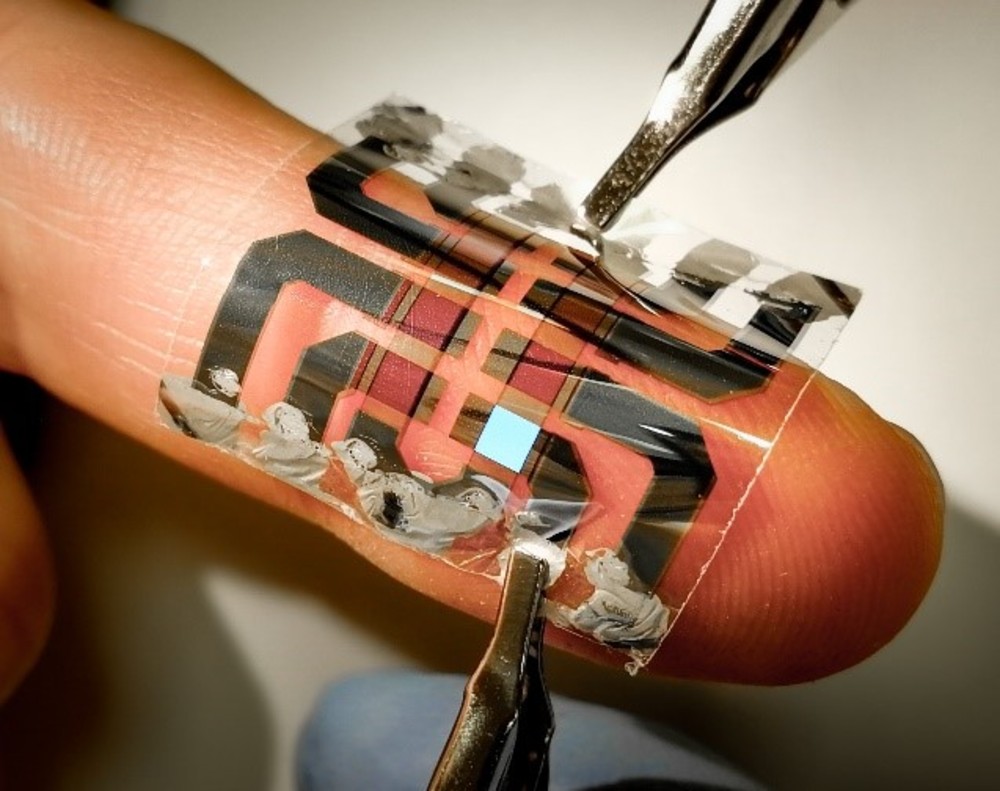SCIENTISTS have discovered a new way of making the most durable, lightweight and thinnest light source.
The scientists claim this could revolutionise the future of mobile technologies and advance brain science further.
The new research, published on Monday this week was led by researchers the The University of St Andrews.

The scientists, have managed to create organic LED’s that are as thin as household cling film.
This was achieved using organic electroluminescent molecules, metal oxide and biocompatible polymer protection layers
The new light sources developed will have future implications for digital displays and can be used to make lighter and thinner displays for phones and tablets; displays that are big when we look at them, but that can be folded or rolled up when not in use.
In the longer term, these new LEDs could also see use in treatments for neurological diseases in which light-gated proteins are deployed to modulate brain activity in patients.
Writing in two separate papers published in Nature Communications yesterday, the new research into the development of organic LEDs, was led by the School of Physics and Astronomy at the University of St Andrews.
Lead scientist for both studies, Professor Malte Gather from the School of Physics and Astronomy, said: “Our organic LEDs are very well suited to become new tools in biomedical and neuroscience research and may well find their way into the clinic in the future.”
Earlier attempts to develop ultra-thin organic LEDs found they struggled with poor stability in air and moist environments.
However, the new LEDs were found to be robust with tests showing they can survive under water for weeks and withstand exposure to solvents and gas plasmas.
The LEDs can also be bent around the edge of a razor blade thousands of times and still function perfectly – a simple experiment that highlights their extreme durability.
The LED’s stability under high humidity and in water makes them ideally suited for wearable applications requiring skin-contact and for use as implants in biomedical research.
Working with Dr Stefan Pulver from the School of Psychology and Neuroscience in a separate study, the scientists used light from an array of miniature organic LEDs and a neuroscience method called optogenetics to direct the locomotion of fly larvae in a highly controlled fashion.
Delivering light to specific body segments of crawling fly larvae allowed the researchers to stimulate and silence sensory neurons in a reliable manner.
Depending on when and where light was delivered, larvae started to crawl forward or backward, with the dynamics of light stimulation controlling the speed of crawling and other aspects of animal movement.
Dr Caroline Murawski, from the School of Physics and Astronomy and the first author of the second study said: “While the precise neuronal mechanism behind the animal response remains unknown, we are now in a much better position to test a range of hypotheses related to the locomotion of these organisms,”
The researchers are currently combining their breakthrough in making light, flexible and robust organic LEDs with what they have learned about controlling neural activity in flies to make light sources that can be implanted into the brain of vertebrate organisms.
In addition to the technological advances with this technology, they could alos be used for clinical treatments by helping those who suffered from loss of vision, hearing or sense of touch.